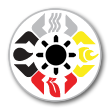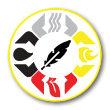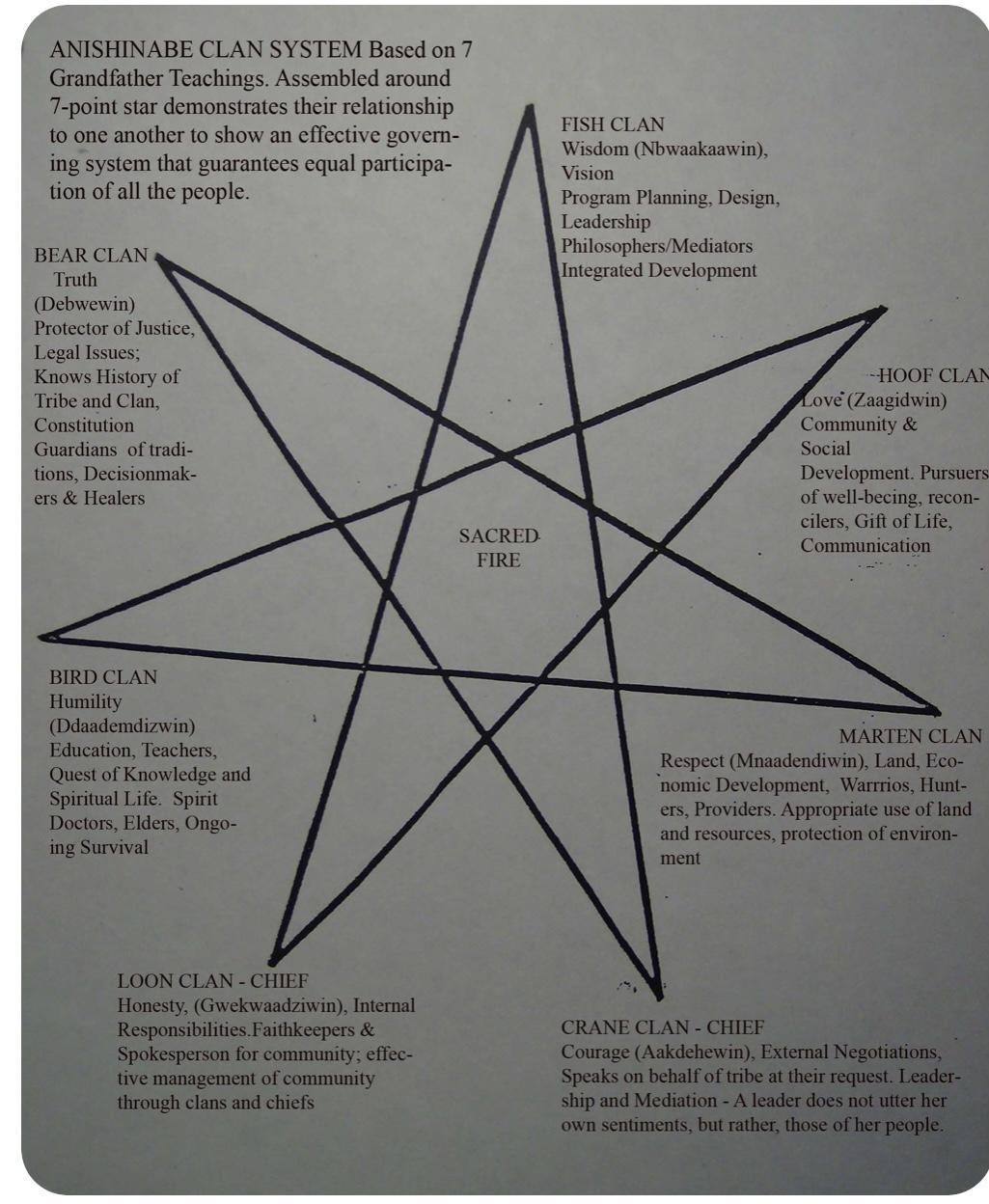Canadian and Canadas Depiction
For context, within the discussion of this module, the term “Indigenous peoples” is a heterogeneous term that refers to the original Nations and peoples of what is now called Canada.
Not a Blanket Statement That All Nations are the Same.
Each Nation has its own unique set of governance systems, goals and aspirations, and Canadians need to understand this and learn to work with each Nation in a meaningful and good way. However, a challenge and reality that all Nations share in similarity is that Canadians view them as one. This is often referred to as the pan-Indigeneity story.
In Canada today, the Constitution Act (1982) recognizes three groups:
-
Indians (now referred to as First Nations)
-
Inuit
-
Métis
Despite constitutional recognition of their (undifferentiated) “existing Aboriginal/Indigenous and treaty rights” (Section 35), citizens in these groups live with constitutional and legal divisions, the most important of which for First Nations is the Indian Act. Status under the Indian Act places individuals and First Nation communities in a relationship with the federal government unlike that of any other group of people in Canada.
 Spotlight
Spotlight
For official purposes and in relations with modern provincial or federal institutions, other names have come into use. The collective noun “Indigenous peoples”, analogous to the term “European”, is used to refer to the descendants of all of the original nations and peoples of Canada.
The synonymous term “Aboriginal peoples” is still used in the Canadian Constitution, though under the influence of the United Nations Declaration on the Rights of Indigenous Peoples and international law it is being supplanted. Both terms –“Indigenous” and “Aboriginal”-- are artefacts of the arrival of European settlement, useful for distinguishing the societies that were here from the societies of the new arrivals who began to settle around 500 years ago, but otherwise concealing important national and cultural differences.
Has anyone ever stopped to ask: “What would Indigenous peoples in Canada like to be referred to?”
 Stop and Reflect
Stop and Reflect
Has anyone ever stopped to ask: “What would Indigenous peoples in Canada like to be referred to?”
Foundations of Indigenous Governance
There are a number of important elements to consider when it comes to the foundations of Indigenous governance systems. Below are three key concepts.
-
Practices occur independently of, or prior to, colonization by an external political entity.
-
Indigenous peoples’ forms of political community pre-existed the arrival of settlers and their acts of colonialism.
-
In many cases, these forms of governance continue and constitute an important part of the political lives of Indigenous peoples.
-
These forms of governance may include traditional institutions; diplomatic practices in relation to other Indigenous peoples; internal differentiation and collective organization of, for example, clans, families, bands, or tribes; and ceremonial activities.
-
Practices that take place in coordination with, or formally sanctioned by, the colonial power.
-
In many cases, Indigenous peoples accommodated themselves to, and integrated themselves into, colonial political structures, either by force, choice, or both.
-
The governance of Indigenous peoples has historically been channeled into structures that typically continue to be controlled by the colonial power, formally and informally.
-
Examples of such governance practices may include band-councils, quasi-judicial adjudicative panels, formal legal challenges, participation within the governing institutions of the colonial power (e.g., sitting in elective office of a legislative body of a colonial power), and treaty negotiations.
-
Practices that are specifically developed and exercised in opposition to colonial power.
-
Indigenous peoples have resisted colonialism and have practiced political governance to counteract the negative effects of exploitation and marginalization.
-
These forms of resistance may include the organization and coordination of movements toward decolonization, antiracist activism, and warrior societies.
In conclusion, understanding the foundations of Indigenous governance systems involves acknowledging three key concepts.
First, Indigenous peoples had pre-existing political communities and forms of governance that pre-existed colonial arrival. These structures, such as clans, families, tribes, and ceremonial activities, continue to play a crucial role in the political lives of Indigenous peoples.
Second, due to colonization, some Indigenous groups had to navigate and adapt to the political structures imposed by the colonial power, often resulting in governance practices that were controlled, directly or indirectly, by the colonial authorities. This integration was sometimes voluntary but often enforced.
Finally, Indigenous governance has also included acts of resistance against colonial power. In the face of exploitation and domination, Indigenous peoples have organized and practiced political governance as a means to protect their communities and counteract negative impacts.
Recognizing these three dimensions is vital in comprehending the complexity and resilience of Indigenous governance practices throughout history and into the present day.
Community Structures – the Anishinaabe
Community governance structures can and do vary among Canada’s Indigenous Peoples. In this module we will explore one structure from the structures from the Anishinabek Nation, which Curve Lake First Nation, where 4 Directions is situated, belongs to.
 Stop and Do
Stop and Do
In order to help you better understand the content that follows, spend some time understanding who were and are the Anishinabek Nation.
Some resources you might consider include:
Website:
Documentaries:
-
"We Were Children" (2012): A powerful documentary that explores the experiences of Indigenous children in Canadian residential schools, including Anishinaabe children.
-
"Our Fires Still Burn: The Native American Experience" (2013): This film shares the contemporary experiences and perspectives of Anishinaabe and other Native American people.
Books:
-
"The Mishomis Book: The Voice of the Ojibway" by Edward Benton-Banai: A classic book that provides valuable insights into Anishinaabe history, teachings, and worldview.
-
"Anishinaabe Syndicated: A View from the Rez" by Jim Northrup: A collection of essays and stories that offer a personal perspective on Anishinaabe life and experiences.
Let’s explore some teachings from Edward Benton-Banai’s The Mishomis.
The Creator gifted to Anishinabek a framework of governance: O-do-i-daym-i-wug.
In our understanding of our clan system teachings for Anishinabek were given seven original teachings. This was created for the needs of the people: food, protection, education, medicine and leadership.
According to Edward Benton-Banai, these are the 7 original clan of Anishinabek:
-
Crane
-
Loon
-
Fish
-
Bear
-
Martin
-
Deer
-
Birds
Depending on the geography location of nations, this may vary in difference in clans. Within each clan there are sub clans for example Deer clan (Hoof clan) has moose, elk, caribou and buffalo clans.
Each clan was given a responsibility in the framework to serve for the people. The clan system to create equality amongst the Anishinabek for example justice, voice, law & order and strengthen and support the teaching and principles of Mino Bimaadiziwin (Good way of Life) or sacred way of life.
Here are some examples of the structure of how the clans are interconnect with each other:
- The crane and loon clans are given the gift of leadership/Chieftainship. Working together, these two clans served “gave the people balanced of government with each serving as a check on the other.” (Benton-banai 74)
-
The Fish Clan was sometimes known as the Water clan - The turtle (Mikinaak) is the chief of this clan. The people of the Water Clan were the teachers and scholars “Intellectuals”. They would help solve disputes between the Chief Clans Loon and Crane.
-
The Bear Clan were law and order and legal guardians. Bear clan members spent a lot of time patrolling the land and surrounding the village. With the time spent connecting with the nature they learned which roots, barks and plants could be used for medicines to treat ailment of their people.
-
The Deer Clan was also known as the Hoof Clan known to be gentle. They cared for others by making sure the community had proper housing and recreation. The Hoof Clan people were the poets and pacifists avoiding all harsh words.
-
The Martin Clan were the hunters, food gathers and warriors of the Anishinabek. Long ago, warriors fought too. Defend their village or hunting Territory. They also became known as master strategists in planning the defence of their people.
-
The Bird clan represented the spiritual leaders of the people and gave the nation its vision of well-being and its highest development of the spirit. The people of the Bird clan were said to possess the Characteristics of the eagle, the head of their clan, in that they pursued the elevations of the mind just as the eagle pursues the highest elevations of the sky.
Some clan duties are practiced today but not in how they are originally given. This image below helps to visualize this information.

Credit: Credit: Geography, Environment and Geomatics, University of Guelph
Long Description
Anishinaabe Clan System: Based on 7 grandfather teachings. Assembled around 7-point start demonstrates their relationship to one another to show an effective governing system that guarantees equal participation of all people.
Fish Clan
-
Wisdom (Nbwaakaawin)
-
Vision
-
Program Planning, Design, Leadership
-
Philosophers/Mediators
-
Integrated Development
Hoof Clan
-
Love (Zaagidwin)
-
Community and Social Development
-
Pursuers of well-being, reconcilers, Give of Live, communication
Marten Clan
-
Respect (Mnaadendiwin)
-
Land, economic development, warriors, hunters, providers
-
Appropriate use of land and resources, protection of the environment
Crane Clan – Chief
-
Courage (Aakdehewin)
-
External negotiations, speaks on behalf of the tribe at their request
-
Leadership and mediation – a leader does not utter her own sentiments, but rather, those of her people
Loon Clan – Chief
-
Honesty (Gwekwaadziwin)
-
Internal responsibilities
-
Faithkeepers and spokesperson for the community
-
Effective management of the community through clans and chiefs
Bird Clan
-
Humility (Ddaademdizwin)
-
Education, teachers, quest of knowledge and spiritual life
-
Sprit doctors, Elders, ongoing survival
Bear Clan
-
Truth (Debwewin)
-
Protectors of Justice, legal issues
-
Knows history of tribe and clan
-
Constitution
-
Guardians of traditions, decision makers, healers
 Looking Closer
Looking Closer
To gain more insight, you should also watch Allan Corbiere presentation on clans.